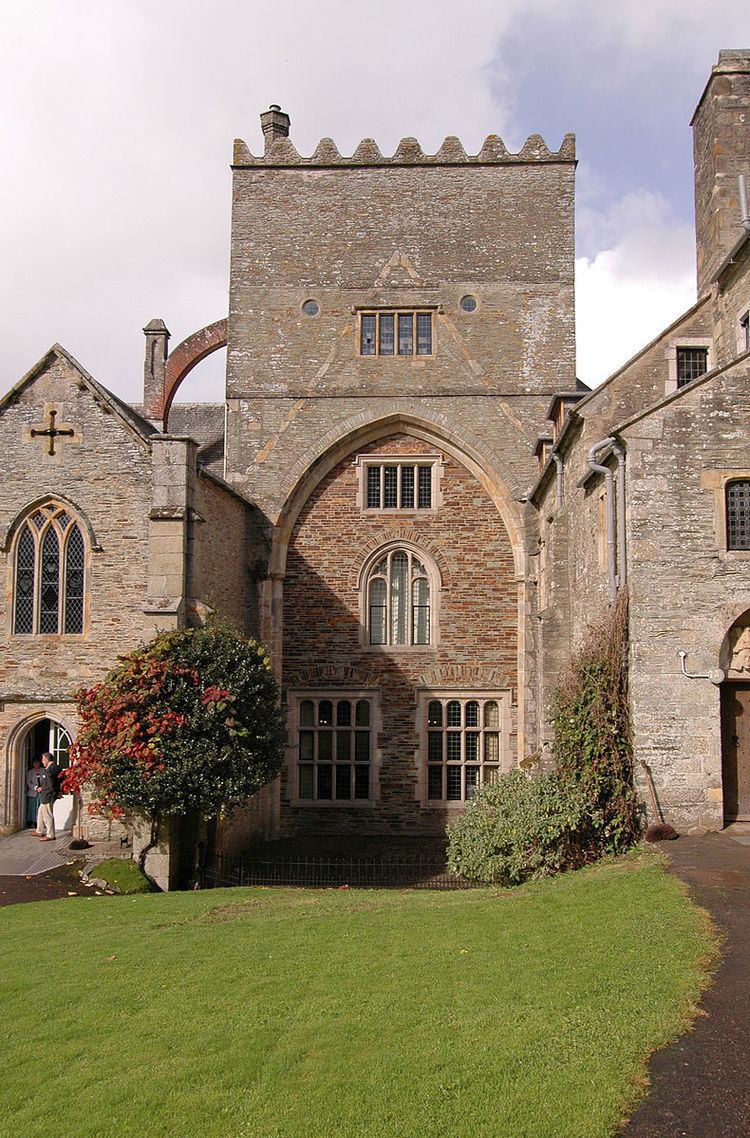Phone +44 1822 853607 | Opened 1801 Architect Samuel Pepys Cockerell | |
 | ||
Owner National Trust for Places of Historic Interest or Natural Beauty Similar Cotehele, River Lyd, Castle Drogo, Saltram House, Morwellham Quay Profiles | ||
Historical buckland abbey
Buckland Abbey is a 700-year-old house in Buckland Monachorum, near Yelverton, Devon, England, noted for its connection with Sir Richard Grenville the Younger and Sir Francis Drake and presently in the ownership of the National Trust.
Contents
- Historical buckland abbey
- Welcome to buckland abbey a magical history tour
- History
- Buckland today
- Costume Group
- References
Welcome to buckland abbey a magical history tour
History
Buckland Abbey was originally a Cistercian abbey founded in 1278 by Amicia, Countess of Devon and was a daughter house of Quarr Abbey, on the Isle of Wight. It remained an abbey until the Dissolution of the Monasteries by King Henry VIII. In 1541 Henry sold Buckland to Sir Richard Grenville the Elder (Sewer of the Chamber to Henry VIII, poet, soldier, last Earl Marshall of Calais) who, working with his son Sir Roger Greynvile (Gentleman of the Privy Chamber of Henry VIII, Captain of the ill-fated Mary Rose), began to convert the abbey into a residence, renaming it Buckland Greynvile. Sir Roger died in 1545 when the Mary Rose heeled over in a sudden squall while the English Fleet was engaged with the French Fleet in the Narrow Sea off Portsmouth, leaving a son aged 3, also named Richard Grenville, who completed the conversion in 1575–76. After being owned by the family for 40 years, Buckland Greynvile was sold by Sir Richard the Younger to two intermediaries in 1581, who unbeknownst to Greynvile, were working for Drake, whom he despised. The abbey is unusual in that the church was retained as the principal component of the new house whilst most of the remainder was demolished, which was a reversal of the normal outcome with this type of redevelopment.
Drake lived in the house for 15 years, as did many of his collateral descendants until 1946, when it was sold to a local landowner, Arthur Rodd, who presented the property to the National Trust in 1948.
Buckland today
The property has been open to the public since 1951 and is operated by the National Trust with the assistance of the city of Plymouth — the City of Plymouth Museums and Art Museum use the building to house part of their collection. The collection is noted for the presence of "Drake's Drum". A number of independent craft workshops are located in the converted ox sheds.
In March 2013 the portrait of a man wearing a white feathered bonnet was re-attributed to Rembrandt by the Rembrandt expert Ernst van de Wetering. In June 2014, after eight months of work at the Hamilton Kerr Institute, the painting's authenticity was confirmed and its value estimated at £30m.
Costume Group
The National Trust Costume Group operate at Buckland Abbey, creating authentic Elizabethan costumes using traditional materials and methods. There is a complete Francis Drake costume, based on the famous portrait of Drake in the National Gallery, and the group are currently working on a costume for Lady Drake, also based on a portrait.
